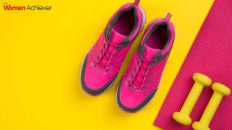The online consumer market of women is a new phenomenon, because inadequate health care is a crisis.
In the developing world, where childbirth complications cause the death of more than 800 women every day, a lack of resources making differences in women’s health to maintain on a daily basis. And in more developed nations, stigma creates an environment that fails women who, for example, are trans or need more accessible birth control. Advances in technology, however, have made it easier to provide solutions to the many health problems women face around the world.
Here are a just few innovative health solutions making a difference in women’s health lives.
1.Sayana Press:
The Sayana Press is a three-month, progestin-only, injectable contraceptive. Since 2014, health providers have made it available in Senegal, Uganda, Burkina Faso and Niger. The same technology has also been used for hepatitis B vaccines in Indonesia.
In addition to its long-term effectiveness, the Sayana Press is only $1, making it one of the most cost-effective solutions for women seeking birth control options in the developing world. Women can inject it themselves simply by squeezing a small bulb filled with the proper dosage. It can only be used once, eliminating the risk of infection caused by needle-sharing.
The contraceptive has been approved in the UK for self-injection, and the World Health Organization is currently working in Senegal and Uganda to approve it for self-injection for women who do not always have access to a doctor.
2. MyTransHealth:
As a woman, finding a good doctor can be a challenge. When you’re a trans woman, finding a doctor who also respects your gender identity and understands your specific needs is even more difficult. About 20% of trans patients have been refused care by medical professionals, while 1 in 4 trans individuals say they delay medical care in fear of discrimination.
These issues, connecting trans, non-binary, agender and intersex individuals in select cities with quality health care professionals. This way, all women can stay healthy, without worrying about misgendering, intolerance and abuse. The users simply input their gender identity, location and type of services needed. The app then provides a list of health providers they can choose from and filter according to insurance accepted, cost, accessibility and more.
3. Inhaled Oxytocin:
Postpartum haemorrhage, or extensive bleeding after childbirth, is the world’s leading cause of maternal mortality. The standard treatment is an injection of oxytocin, which must be stored in a refrigerator and administered by a professional. But in developing nations, these resources aren’t always readily available. According to researchers, it has developed a form of oxytocin that can be inhaled and used in rural areas to save mothers who experience haemorrhaging.
The project is truly innovative, as it will, for the first time, provide an effective oxytocin product that does not require refrigeration nor other resources such as needles and syringes, said by a, project leader of research team.
The gap between the health outcomes in developed and developing countries is unacceptable, and we have the scientific expertise to reduce that gap.
4.Hemafuse:
The Hemafuse is a handheld auto-transfusion device developed by medical device company Sisu Global Health. The device recycles a person’s blood back into their body in emergency situations, when donated blood or a transfusion machine may be unavailable.
One of its primary uses is for postpartum haemorrhaging. In some developing countries, doctors use a ladle and cheesecloth to perform auto-transfusions because more advanced machinery and supplies are so expensive.
The low-cost Hemafuse makes the process simpler and more sanitary, working like a hand-pump to take in blood and deposit it into a blood bag. The device contains a filter to remove clots and other particulates in the blood.
5. Antishock garment for postpartum haemorrhage:
It may just look like a wetsuit, but this neoprene garment is secured onto women’s bodies during postpartum haemorrhaging to save their lives. Derived from technology originally developed by NASA, the garment “applies pressure to the lower part of the body, forcing blood to key organs including the heart, lungs and brain.”
Most importantly, the garment is effective. Clinical trials by the University of California, San Francisco, observed a 50% decrease in deaths from hemorrhaging.
6.Safe Delivery App:
Delivering a child is no simple task, and in some areas of the world, there are no doctors, nurses or midwives available to coach moms through the process. The Safe Delivery App, created by the Danish Maternity Foundation, teaches birth attendants in hard-to-reach areas how to manage deliveries through simple, animated instruction films making differences in women’s health condition during the process.
The app has proven to be effective in health facilities in Ethiopia, where the ability to handle postnatal bleeding and resuscitate a new-born more than doubled after health workers used the app for one year.
7. Life Saving Dot:
In rural India, millions of women suffer from breast cancer, fibrocystic breast disease and complications during pregnancy — many cases of which have been linked to iodine deficiencies.
In order to combat this issue, Talwar Bindi created the Life Saving Dot. It resembles the traditional bindi, which many Indian women wear between their eyebrows, but the Life Saving Dot is coated with iodine to deliver the recommended amount of 150-220 micrograms of the nutrient daily to poor women making a difference in women’s health condition.
It costs only 10 rupees, or 16 cents, for a packet of 30 bindis. The Life Saving Dot is currently distributed to women through health camps and clinics in several rural villages.
8.Flo:
In many regions, periods force girls to stay home and out of school because they don’t have adequate sanitary products.
Product designer Mariko Higaki Iwai wanted to create a solution that allowed girls to be comfortable, confident and in control. The result was Flo, an affordable, reusable menstrual hygiene kit that makes it possible for girls to maintain their daily schedule, even when it’s that time of the month.
The kit includes reusable pads, a wearable pouch to carry them in, and an inconspicuous washing/drying container, increasing access to dry, clean pads, privacy and — as a result — education without interruption.






Add comment